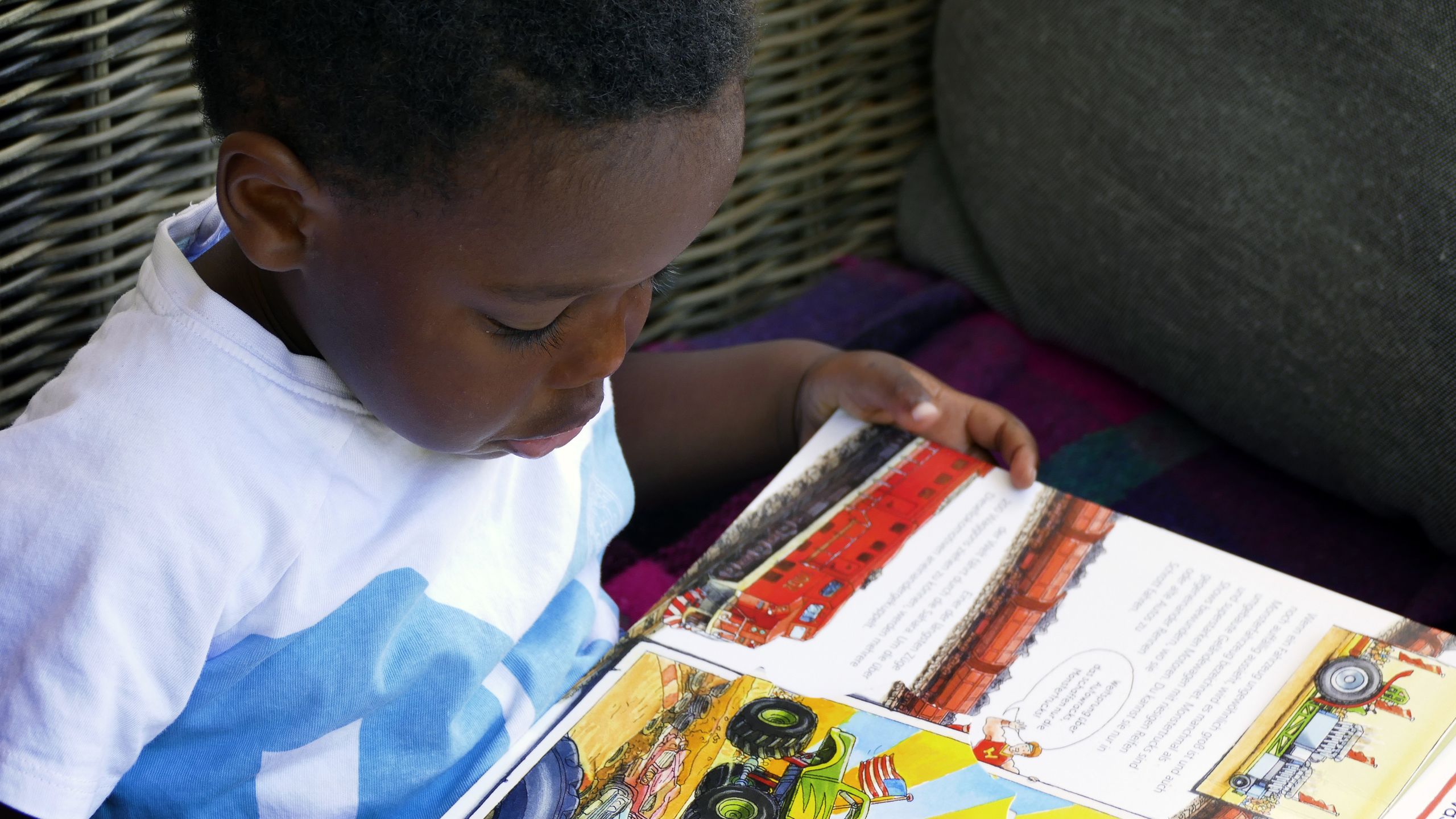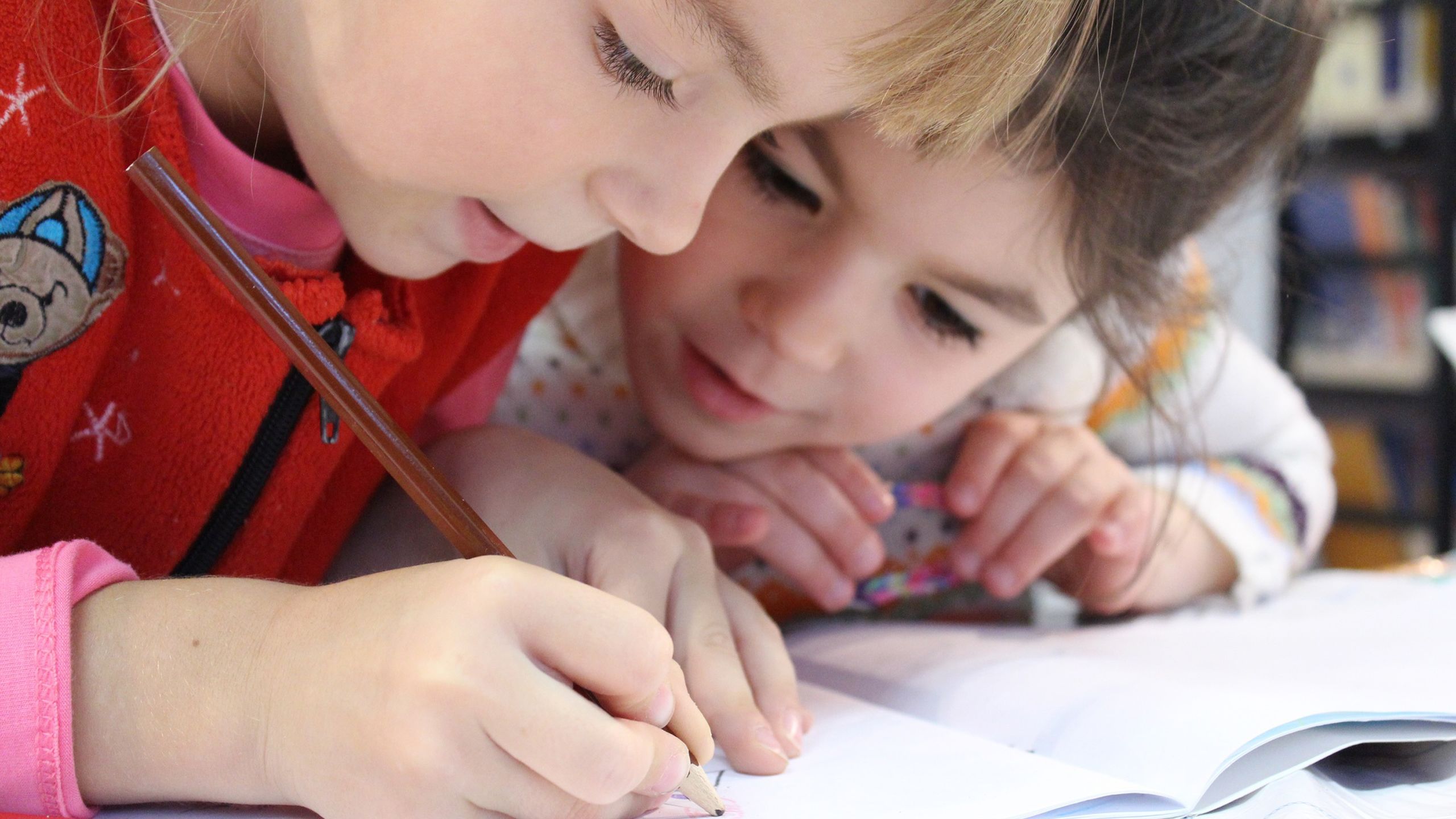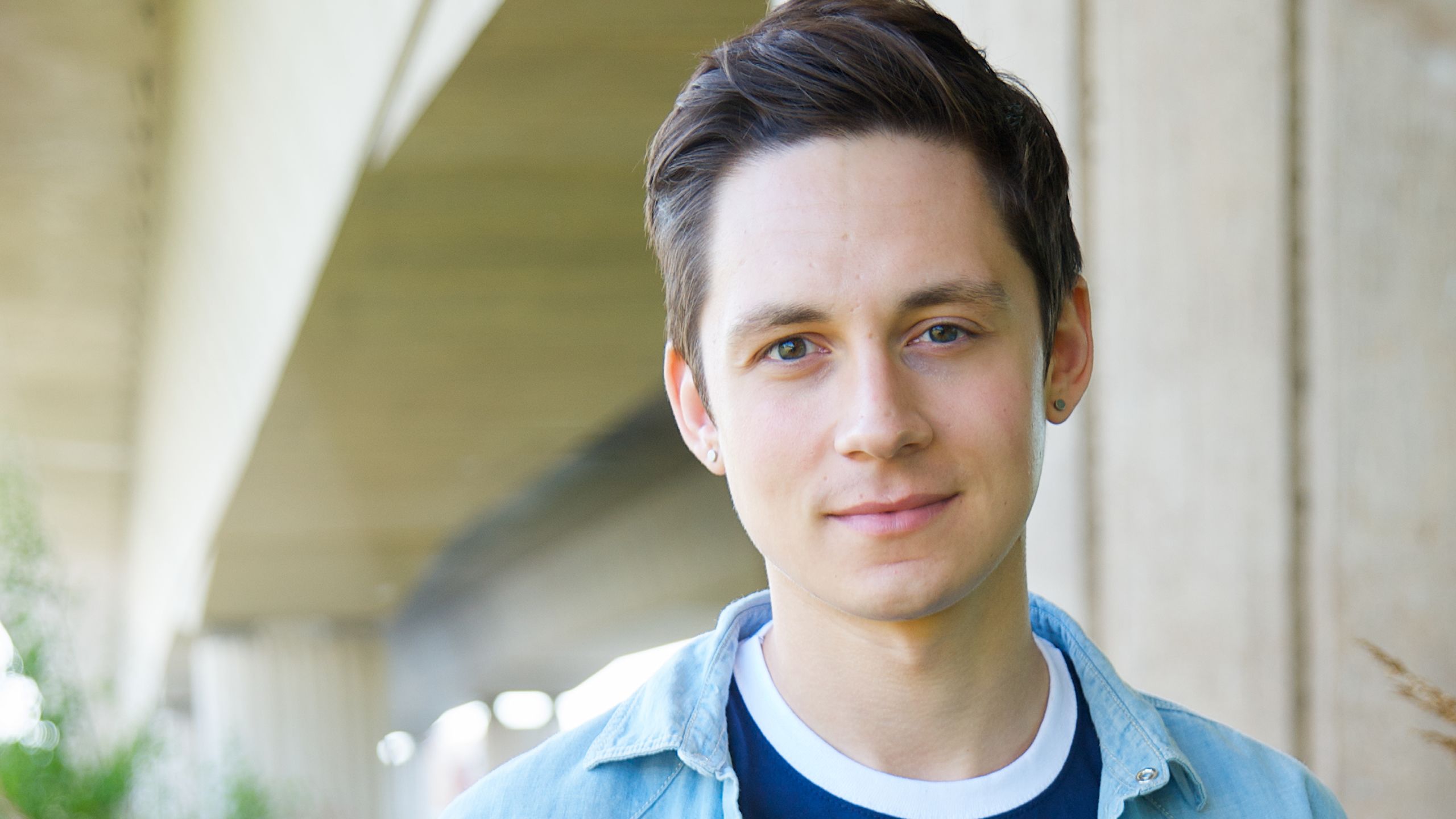Inside the mind of a young person
Our brains begin to form in the womb but continue to take shape into adolescence. In a series of articles, we look at how the latest research could help us support children’s development, helping them overcome learning disorders and build resilience against future mental health problems.

1. The glue that builds a strong child
Could the early moments of a newborn baby be a crucial window for helping prevent problems in later life?

Most animals are born relatively complete: a newborn gazelle, for example, is running within a couple of hours of birth. Not so for humans: for us, birth is very much just the beginning.
“In a newborn baby’s brain, many cells haven’t gotten where they need to go,” explains Professor David Rowitch, Head of Cambridge’s Department of Paediatrics. “We think this ‘commuting’ process is vulnerable to adverse events. A lack of oxygen or infection, for example, might block cell movement and derail the schedule of brain circuit formation.”
He and colleagues have shown that neurons travel extensively in the brain as part of this schedule – which makes this a vulnerable time for developing infants. Take a preterm infant born after six, rather than nine, months in the womb. It will spend its early life in a neonatal intensive care unit and has a higher risk of having medical and neurological complications. Such an infant, says Rowitch, is also at risk of mental health problems in later life.
“Because these are not kids who are genetically predisposed to mental health conditions, something must have happened to them early in their life that made them at high risk – that’s an important clue.”
What that ‘something’ is may relate to Rowitch’s own research on the preterm brain – and particularly its ‘building blocks’, cells known as neurons and glia.
‘Glia’ literally means ‘glue’, a rather nondescript term – an indication, he says, of how their importance has been overlooked by neuroscientists. Yet it’s becoming increasingly clear that glia are essential to brain development, in assembling neural circuits and in helping brain centres communicate with each other and the body. Crucially, glia provide myelin to insulate the nerve tracts during development. Rowitch, whose work is supported by the Wellcome Trust, European Research Council, National Institute for Health Research and National Institutes of Health (USA), believes that abnormal glial function plays an important role in the development of neurological, cognitive and mental health problems later in life.
He explains that if these circuits need to balance each other, and there is an adverse event like preterm birth, then suddenly there will be an imbalance in the brain. “Migration of neurons is a relatively late process in the human brain, so problems that affect the newborn may be sufficient to explain long-term problems such as cerebral palsy and cognitive and mental health problems. It could also provide clues to disorders like autism.”
But bridging the diagnosis and treatment of physical changes in the developing brain to the diagnosis and treatment of mental health disorders faces a challenge, he says. “While the majority of mental health problems manifest in children, teens and young adults, the norm for healthcare is that physical and mental health are treated separately, usually at entirely different clinics.”
This seems particularly disjointed when one considers children with eating disorders or those with chronic diseases, who are particularly vulnerable to depression. While there is increasing evidence that genetic factors can increase a child’s vulnerability to mental health conditions, this is clearly not the whole story.
Rowitch and NHS colleagues believe the time is now to bridge the divide between physical and mental health. A vision being developed for a new Children’s Hospital on the Cambridge Biomedical Campus integrates both facets and develops a holistic approach to healthcare.
This would mean that a child with an eating disorder, for example, would be seen by both psychiatric and medical specialists, and a child with a chronic disease would see a psychiatrist, providing early detection and intervention for mental health.
“We need to move away from silos,” Rowitch says. “And this is where Cambridge, with strengths across the board from genomics to complex medical care, child and adolescent psychiatry, is perfectly positioned to lead by example.
“It has been said that it is easier to build strong children than to repair broken men,” he adds, quoting the words of 19th-century American abolitionist and ex-slave Frederick Douglass. “If our vision can be realised, then Cambridge could help ensure there are fewer ‘broken’ men and women to repair in future.”

2. Struggling with labels
Labels help us make sense of the world – but only to a limit. The latest techniques are helping scientists develop a more nuanced understanding of learning disorders and identify new ways of supporting those who struggle at school.

The education system is awash with labels: pupils are dyslexic, have attention deficit hyperactivity disorder (ADHD), or have a particular ‘learning style’. Sometimes, like these latter labels - visual, auditory or kinaesthetic learners – they have found common currency and yet are based on no credible evidence.
These styles are “nonsense”, says Dr Duncan Astle from the Medical Research Council (MRC) Cognition and Brain Sciences Unit in Cambridge. “Children will tell you they have a preferred learning style, but they’re no better in their preferred style. In fact, there are probably some dangers to telling a child that they’re a kinaesthetic learner or whatever, because then when you try teaching them in a different format, they think ‘What’s the point in paying attention? This isn’t in my preferred style.’”
Other labels, particularly those based on clinical diagnoses – dyslexia, dyspraxia, ADHD, for example – can be helpful in ensuring a child receives specialist support. But diagnosis is a “thorny issue”, Astle says. These conditions are complex, their causes poorly understood, and children will often meet the diagnostic criteria for multiple disorders. This makes studying them, and hence developing effective interventions, challenging: one child’s ADHD may be very different from another’s. As Astle says: “The labels don’t fully characterise what the child struggles with.”
Together with colleagues Susan Gathercole and Joni Holmes at the Centre for Attention Learning and Memory, Astle sees hundreds of children who have been referred by health and education professionals for problems in attention, memory, language or poor school progress.
Rather than grouping them together according to a clinical diagnosis, the team applied machine learning to identify children with common cognitive problems. They found that the children could be split into four broad cognitive profiles: children with verbal cognition problems (or ‘phonological difficulties’), those with working memory problems, those with more severe problems across the board, and those who do not appear to have any cognitive problems but still struggle at school.
These cognitive profiles may allow for more effective ways of supporting the children, says Astle. He gives the example of a typical problem that might confront a child with working memory problems.
“If you spend time in a primary school, you soon learn that if you can’t follow a list of instructions, you’re stuffed. ‘Hang your coat up, go to the table, pick up a card and a green pen, and come and sit in front of me.’ Even copying things down from the board will be very slow and error prone if you can only hold one or two letters in mind at a time.”
Problems with working memory can soon spill over to other aspects of learning, so if a teacher can limit the number of instructions or the amount of copying from the board, for example, then this could benefit the child’s overall learning and development.
Astle’s team has been looking at whether ‘brain training’ could help these children. The researchers showed that just 40 minutes of training per day focused on working memory led to improvements – and to changes in brain connectivity – although the benefits were limited.
“They get better at the thing they’re training on and closely adjacent skills, but the kids who undergo this kind of training don’t spontaneously get better at maths or start experiencing fewer symptoms of ADHD,” he says.
Brain training is becoming an increasingly popular way to help children overcome their learning difficulties. Professor Usha Goswami from the Centre for Neuroscience in Education is working on a game that could help children with dyslexia, for example.

Surprisingly – and possibly as a result of the heterogeneity of learning disorders – opinion is still divided over what the condition actually is. Dyslexia literally means ‘difficult reading’, implying that it is a visual condition. Not so, says Goswami, who argues that dyslexia is about how we process speech.
Speech is transmitted as a sound wave. It’s interpreted by brain cells that vibrate at several different frequencies, for example delta (1–3 Hz) and theta (4–8 Hz). The delta frequency relates to the perception of stress patterns in speech, theta to syllable segmentation.
When a speech signal comes into the brain, it acts as a ‘reset button’ to these cell assemblies, which then align their vibrations to the rhythm of the speech: when they are accurately aligned, speech becomes intelligible.
When Goswami analysed the speech patterns of parents talking to infants – for example using nursery rhymes and exaggerated baby speech – she found that they emphasise the delta frequencies. “My work suggests that this delta frequency, which helps you perceive the stress patterns used in all languages to convey meaning, is the foundation of language. Once you’ve got that skeleton, you can start adding things, like the syllables, the single speech sounds, the phonemes.”
Crucially, she showed that, for children with dyslexia, their delta networks were out of phase with the speech patterns. It appeared that they were missing the initial ‘reset’ command.
It isn’t clear yet why this should translate into problems with spelling and reading, but, says Goswami, “there’s something about reflecting on sound as an abstract pattern that you need for learning a system of spelling. Even if you’re learning a straightforward language like Italian or Spanish, if you have these phonological and acoustic processing problems, it’s still a very hard task for your brain.”
If you can intervene before a child is faced with learning to read, you may have a better chance of limiting the impact of the disorder. Goswami has developed a music and poetry activity to encourage pre-schoolers to learn speech rhythm patterns and develop phonological awareness – “things that used to be ubiquitous in the playground, like clapping games, matching beats to syllable beats in language, marching games, drumming, even poetry out loud.”
She is also working with a team at the University of Jyväskylä in Finland on a children’s ‘brain training’ app that will help reinforce these skills – the English language version has recently been licensed by Cambridge Enterprise, the commercialisation arm of the University.
The app, GraphoGame, has been shown to be as effective as one-to-one teacher support but any number of children can be playing at the same time.
Goswami is particularly enthused by the idea that, in future, infants at risk of dyslexia – for example if they have a parent with the condition – may be able to use a device that hooks over the ear and helps to amplify the elements of speech that are not processed correctly. She has received funding from the MRC and the Fondation Botnar to develop a proof of principle.
“It could eliminate dyslexia,” she says, excitedly.

One way of getting to the root cause of learning disorders could be to identify infants at greatest risk and to see how their brains develop in the first few months – or even days – after birth. This is not without its challenges, as Professor Mark Johnson, Head of Psychology, knows too well.
Johnson joined Cambridge recently from Birkbeck, University of London, where he pioneered research into infants’ and toddlers’ brains at the world-renowned Babylab. He is now turning his attention to an even earlier stage, the period from immediately before birth to the first few months after.
“Most people will agree that the biggest change in environment that the brain has in its lifetime is birth,” he says, “going from being a baby in the womb to being outside within a couple of hours, in a world with human beings, lights and everything. It’s clearly a very dramatic event for the brain.”
In collaboration with Professor Topun Austin at the Rosie Hospital in Cambridge, and building on earlier work by Professor Simon Baron-Cohen at the Autism Research Centre, Johnson plans to use the latest prenatal MRI and ultrasound techniques to study the behaviour of the baby in the womb. It’s been clear for a while that the fetus has a “behavioural repertoire”, he says. A recent study, for example, showed that a fetus will follow a light source shone onto the mother’s abdomen.
Once the babies have been born, he hopes to observe their brain development over their first few days in the outside world. Babies’ skulls are relatively thin and translucent. By shining infrared light on a newborn’s head, it’s possible to observe subtle changes in the colour of the blood, which becomes bluer as activity (and hence oxygen) levels in a brain region fall, and redder when they increase. Using this technique, known as near-infrared spectroscopy, Johnson wants to validate initial data that suggests there are dramatic changes in brain function over the first few days.
His research has already shown how certain brain regions ‘tune up’ during infancy, such as the area that in adults has been shown to process faces.
“In infants, those same regions respond to faces, but they also respond to other complex objects,” he says. “Over time, they become selectively interested in faces. This could be one of the processes that goes awry in autism, where the part of the brain that responds to social stimuli has not been properly tuned.”
This is unlikely to be the whole story, however. Johnson points out that there are also other, more generalised problems in autism, such as subtle motor delays and problems with visual and auditory perception, which then manifest in social challenges later in life.
Johnson believes that these later manifestations may arise from the autistic child’s inability to process complex information. “If you’re a 12-month-old, the most complex aspect of the external world is other human beings. They’re unpredictable, they’re dynamic, they make sounds, they smell. It’s a massive challenge to understand the social world, which might explain why autistic children prefer stimuli that are repetitive or more predictable.”
He agrees with Astle that understanding and measuring brain function is better than applying labels. When trialling interventions to help ameliorate some of the traits of these conditions, brain measures are better than clinical tools at predicting outcome.
This move away from broad labels and towards a more nuanced approach is reflected in the latest edition of the American Psychiatric Association’s Diagnostic and Statistical Manual of Mental Disorders (DSM-5), which has moved towards ‘dimensions’ of symptoms of autism rather than categories (the term ‘Asperger’s’ is now classified within the Autism Spectrum, for example).
“In the past, we’ve been overly reliant on biomedical models,” Johnson says. “People tend to think of autism and ADHD as diseases, when they in fact describe a series of behaviours. It’s not right to think of them in the same way as, say, the flu.”
As humans, we like labels: they help us categorise and simplify the world around us. We may not be able to dispense with labels like autism and dyslexia anytime soon, but if science is teaching us anything, it’s to look beyond the label and remember that behind it lies a unique – and complex – individual.

3. It’s not easy being teen
By understanding how the adolescent brain wires and rewires, scientists are helping to pinpoint why teenagers are especially vulnerable to mental health problems – and why some are resilient.

When James Downs (pictured) was at secondary school, he was bullied for standing out. He developed OCD and a fixation with his appearance, which then led to an eating disorder. Now recovered, he describes his treatment as being “like an experimental DIY project rather than something with clear oversight and a plan”.
James's story is not uncommon. When Charly Cox was diagnosed in her teenage years with depression and other mental health disorders, what lay ahead for her was “a long and painful ordeal of trial and error, guesswork and delay. I felt loss and frustration more times than I was ever gifted hope, knowledge or effective treatment.”
Flo Sharman, who suffered from mental illness from the age of eight, says: “I lost my childhood to the stigma surrounding mental health.”
One in four of us experience the debilitating, isolating and traumatic effects of mental health disorders. Around 75% of adult mental health problems begin before the age of 18, disrupting education and social interactions, affecting relationships with family and friends and future job opportunities, and in some cases, costing lives.
Charly, Flo and James are among those who have lent their support – and their stories – to the mental health charity MQ to help work towards a future in which adolescents no longer face the life-altering challenge of living with these disorders.
Dr Anne-Laura van Harmelen from Cambridge’s Department of Psychiatry leads a project funded by MQ, called HOPES, and shares this vision: “Our brains undergo complex neural development during the teenage years to prepare us to take care of ourselves. However, some of these changes may be linked to a vulnerability to mental health disorders. If we can better understand what these vulnerabilities are, we can identify those at risk and treat them early, before the disorders emerge.”
But, until recently, remarkably little has been known about what’s going on inside a teenager’s head. Unravelling some of the complexity has required the combined input of psychiatrists, neuroscientists, psychologists, social scientists, computational biologists and statisticians – and the brains of hundreds of healthy teenage volunteers. The teenagers were scanned as part of the NeuroScience in Psychiatry Network (NSPN), set up in 2012 by Professor Ian Goodyer from the Department of Psychiatry with funding from the Wellcome Trust.
So far, 2,300 healthy volunteers aged 14 to 24 years have been recruited by the University of Cambridge and University College London for analysis through behavioural questionnaires, cognitive tests, and medical and socio-economic history. Some 300 adolescents have also had their brain anatomy and activity scanned millimetre by millimetre using MRI, a method that can reveal connections between brain activity centres.
The result is one of the most comprehensive ‘circuit diagrams’ of the teenage brain ever attempted. “The project has been a big step forward in looking inside the black box of the teenage brain,” explains Professor Ed Bullmore, who leads the NSPN. “We found that there were distinctive patterns of developmental change in brain structure and function during adolescence that could help to explain why mental health disorders often arise during late adolescence.”
For instance, Bullmore’s colleagues Dr Kirstie Whitaker and Dr Petra Vértes discovered that the outer region of the brain, known as cortical grey matter, shrinks, becoming thinner during adolescence. As this happens, the levels of myelin – the sheath that ‘insulates’ nerve fibres, allowing the fibres to communicate efficiently in the white matter – increase.

In a separate study, Dr František Váša designed a method to combine all of the scans of the structural changes in the brain through a ‘sliding window’ – as if viewing the changes in the brain network of an ‘average’ adolescent as they mature from 14 to 24 years of age. It sounds simple enough but this innovation was so complex that it took several years of statistical and computational analysis to perfect.
“We saw that the changes are greatest in the most connected ‘hub’ parts of the brain. Our interpretation is that when the brain develops it builds too many connections; then, during the teenage years, those that are used frequently are strengthened and others are ‘pruned’,” says Váša, whose PhD studies were funded by the Gates Cambridge Trust.
What makes this especially interesting is that Vértes and Whitaker also discovered that the brain areas undergoing the greatest structural changes during adolescence are those in which genes linked to risk of mental health disorders are most strongly expressed.
One of the disorders is schizophrenia, which affects 1% of the population and often starts in adolescence or early adult life. Vértes has recently been funded by MQ to search for unique patterns of brain connectivity among those who develop symptoms of schizophrenia, and to cross-reference them with patterns of gene expression across the brain. “Not only is this knowledge important for identifying new treatments that are more effective for a greater number of patients at an earlier stage, but it could also help in predicting those who are at risk,” she explains.
Another area where there has been little improvement in predicting behaviours is that of suicide – the second leading cause of death among the young.
“Around 16% of teens think about suicide and 8% report making an attempt, yet there has been little improvement in our ability to predict suicidal behaviours in 50 years,” says van Harmelen, who is a Royal Society Dorothy Hodgkin fellow. The HOPES project she leads aims to develop a model to predict who is at risk of suicide by analysing brain scans and data on suicidal behaviour of young people from across the world to identify specific, universal risk factors.
“These risk factors may be connected with traumatic and stressful events early in their lives,” she adds. “In fact, we know that about a third of all mental health problems are attributable to events such as bullying, abuse and neglect. Much of my work has been to understand the impact of these factors on the developing brain.”
She discovered that childhood adversity is related to an altering of the structure and function of parts of the brain, and that this increases vulnerability to mental health problems. Intriguingly, some adolescents with traumatic early life experiences fared a lot better than would be predicted. This ‘resilience’ was enhanced by receiving the right kind of support at the right time. She calls this ‘social buffering’ and finds that for 14-year-olds it most often comes from family members, and for 19-year-olds from friendships.
With funding from the Royal Society, she is now starting to look for biological factors that underpin resilient functioning – for instance, how does the immune system interact with the brain during periods of psychosocial stress in resilient adolescents? Are there biomarkers that can be used to predict resilience after childhood adversity?
“We are diving deeper into the factors and mechanisms that might help,” says van Harmelen. “We know there are lots of social, emotional and behavioural factors that help to build resilience, and that these factors are amenable to intervention by therapists – but which are the most important, or is it a specific combination of these factors?
“If you speak to anyone who has had a mental health problem, you will know the effect it’s had on them and their families,” she adds. “Even a minor contribution to lowering this effect through early diagnosis and treatment is worth a lot of effort.”

Read more about our research on children and childhood in the University's research magazine: download a pdf, view on Issuu, or follow on Twitter at #SpotlightonChildren.
Images
Main image
The glue that builds a strong child
Struggling with labels
It’s not easy being a teen
- ed_davad (Pixabay)
- James Downs
- Eric Ward (Unsplash)
